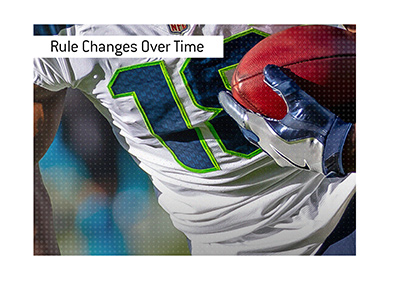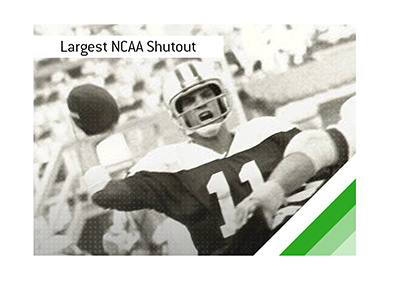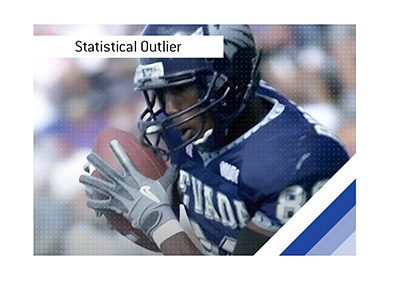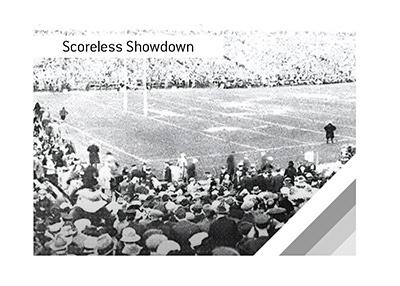A List of Some of the Biggest Changes
Published on November 15th, 2021 11:20 pm EST Every year, the NFL considers rule changes.
Every year, the NFL considers rule changes. Some are potentially big changes (these hardly ever get implemented), and some are very small tweaks.
Over the years, the NFL has implemented some VERY big rule changes that have changed the game forever. Here is a list of the five biggest rule changes that the NFL has ever implemented:
1. A forward pass is only legal if it is thrown at least five yards behind the line of scrimmage.
Can you imagine that there was actually a time when a quarterback had to be five yards behind the line of scrimmage in order to make a legal forward pass?
In a 1932 playoff game between the Chicago Bears and Portsmouth Spartans, fullback Bronko Nagurski faked a run and then passed to Red Grange for a key touchdown.
The Portsmouth Spartans argued that the pass should be declared illegal, as it was thrown within five yards of the line of scrimmage.
In 1933, the NFL would change this rule and make all forward passes legal, provided that they are thrown from behind the line of scrimmage.
2. What hash marks?
There was a time when the ball would be spotted where the previous play ended.
Imagine the difference in defensive strategy if a play started mere inches away from a sideline. Defenses would use the sideline as an "extra defender", making it much more difficult for teams to operate.
In addition, field goals were spotted from where the last play ended, making it much more difficult to kick field goals as well.
In 1972, the NFL established the hash marks that are still used today - 70 feet, 9 inches from the sidelines. This immediately changed the game - rushing numbers went way up, as well as field goal conversion percentages.
3. Illegal Contact.
In 1978, the NFL? implemented the illegal contact rules in which contact is restricted five yards or more down the field.
This was part of the NFL's move up open up the offense in the game, as it gave wide receivers much more room to operate, as members of the defense were not able to hammer their assignments all the way down the field.
The "bump and run" started to be utilized by defenders in the 1960s, and defenders took advantage of the rule by bumping the offensive player until the ball was thrown, regardless of how far they were down the field.
Now, both the receiver and defender have an obligation to avoid contact with each other if they are more than five yards down the field.
4. Player Substitutions.
There was a time when there were limits on how many players could be substituted into games between plays.
In this day and age, there are offensive players, defensive players, special teams players, long snappers, etc.
For a period of time, there was a limit on the number of substitutions that could be made at a time, due to an assortment of different reasons, including team costs (less players equalled lower costs), etc.
At one point, substitutions were prohibited. Then, a specific number were allowed at a time. Eventually, the NFL allowed unlimited substitutions, which allowed players to become offensive, defensive or special teams specialists.
5. Face Mask Penalties.
Prior to 1956, and shortly after the introduction of the first face masks, it was legal for players to grab onto and even tackle other players using their face mask.
In 1956, the NFL made it illegal for one player to grab another by the face mask, unless that player was carrying the ball.
In 1962, the NFL decided that grabbing the face mask would be illegal, in any situation.
While this rule didn't have a massive impact in terms of the way that the game was played, it certainly helped to prevent injury.




